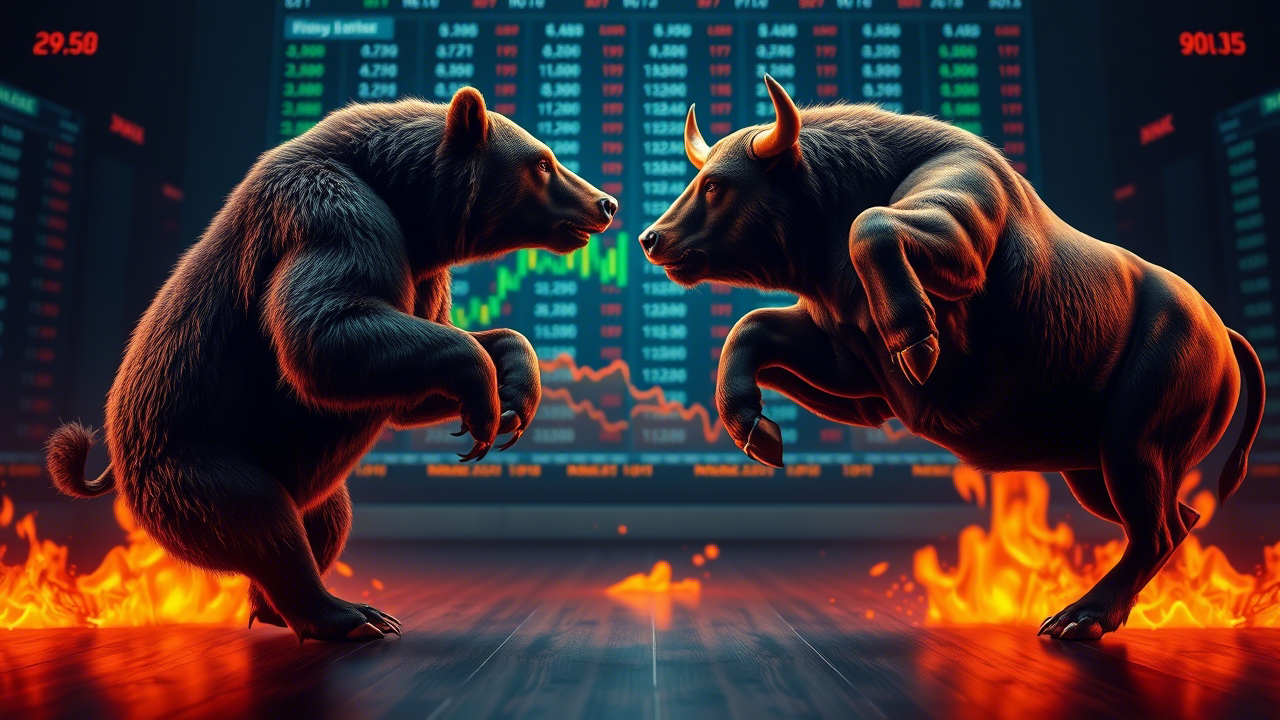Crypto prices don’t move in a straight line — they go through cycles of ups and downs, known as market cycles. At times, prices soar, optimism is high, and everyone seems to be investing. Other times, prices fall, fear takes over, and many sell at a loss. These phases are called bull and bear markets.
Understanding these cycles is important for investors because it helps them make smarter decisions. Instead of buying when prices are high out of excitement or selling when they drop out of fear, knowing how market trends work can help avoid costly mistakes.
In this article, we’ll break down:
- What market cycles are and how they work.
- How to identify bull and bear markets and their key signs.
- What drives crypto market trends and what influences prices.
- Strategies to navigate different market conditions and invest wisely.
By the end, you’ll have a clearer picture of how crypto markets move and how to make better-informed investment decisions.
What Are Market Cycles?
A market cycle is the natural pattern of ups and downs in asset prices over time. Just like seasons change, financial markets — including crypto — go through repeating phases of growth and decline.
The Four Phases of a Market Cycle
Markets typically move through these stages:
- Accumulation – After a big drop, prices stabilize as early investors and smart money start buying again.
- Expansion (Bull Market) – Optimism returns, demand increases, and prices rise as more investors jump in.
- Peak & Distribution – Prices reach a high point, hype is at its peak, and experienced investors start selling.
- Decline (Bear Market) – Prices drop as fear spreads, and many investors sell, leading back to the accumulation phase.
Crypto vs. Stock Market Cycles
Traditional stock markets also follow these cycles, but crypto moves much faster and more dramatically due to higher volatility and emotional trading. While stock market cycles can take years, crypto cycles often play out in months.
By recognizing these patterns, investors can make better decisions—avoiding panic selling in downturns and spotting opportunities during recovery phases.
The Bull Market: What It Means and Key Signs
A bull market is a period when cryptocurrency prices are rising, investor confidence is high, and demand outweighs supply. This phase is often fueled by optimism, growing adoption, and an influx of new investors looking to profit.
Characteristics of a Bull Market
- Rising Prices – Crypto assets increase in value over an extended period.
- Strong Investor Confidence – More people are buying, believing prices will keep going up.
- Increased Adoption – Businesses, institutions, and mainstream users start embracing crypto.
- Media Hype – News outlets and social media buzz about crypto’s success, attracting more interest.
Common Indicators of a Bull Market
- Higher Trading Volume – More people are buying and selling.
- Bitcoin and Ethereum Leading the Market – When these top cryptos rally, others usually follow.
- Institutional Investment – Large companies and hedge funds start investing heavily.
- Fear of Missing Out (FOMO) – More retail investors jump in, pushing prices even higher.
Examples of Past Crypto Bull Markets
- 2017 Bull Run – Bitcoin soared to nearly $20,000, driven by ICO (Initial Coin Offering) hype and retail investor interest.
- 2020-2021 Bull Market – Bitcoin hit an all-time high of $69,000, fueled by institutional adoption, DeFi (Decentralized Finance) growth, and NFT mania.
Bull markets create excitement and big opportunities, but they don’t last forever. Next, we’ll explore the bear market and what signs to watch for when prices start to decline.
Related: Strategy Sells $1.4B in Stock to Cover Bills Amid Bitcoin Slump
The Bear Market: What It Means and Key Signs
A bear market is when cryptocurrency prices fall for an extended period, investor confidence drops, and fear takes over. This phase often follows a bull market when prices reach unsustainable highs and start declining.
Characteristics of a Bear Market
- Falling Prices – Crypto assets lose value steadily.
- Fear and Uncertainty – Investors become pessimistic, and many sell at a loss.
- Lower Trading Volume – Fewer people are buying, and market activity slows down.
- Bad News & Negative Sentiment – Headlines focus on crashes, scams, or regulatory crackdowns.
Common Indicators of a Bear Market
- Prolonged Price Declines – Bitcoin and major altcoins drop significantly (often 20% or more from their highs).
- Mass Liquidations – Overleveraged traders get wiped out, worsening the price drop.
- Exit of Retail Investors – Many inexperienced investors panic-sell or leave the market.
- Decline in Institutional Interest – Large investors pull back, waiting for better conditions.
Examples of Past Crypto Bear Markets
- 2018 Crypto Winter – After the 2017 bull run, Bitcoin crashed from $20,000 to around $3,000, and many altcoins lost over 90% of their value.
- 2022 Bear Market – Bitcoin fell from $69,000 to under $20,000, triggered by economic downturns, high-profile collapses (like Terra and FTX), and rising interest rates.
Bear markets can be tough, but they also create opportunities for patient investors. Next, we’ll explore what drives these cycles and why crypto markets move the way they do.
What Drives Crypto Market Cycles?
Crypto market cycles don’t happen randomly—they are influenced by several key factors that drive prices up and down. Understanding these factors can help investors make smarter decisions.
Supply and Demand
Like any market, crypto prices are affected by how many people are buying (demand) versus how many coins are available (supply). When more people want to buy than sell, prices rise (bull market). When more people sell than buy, prices drop (bear market).
Major Events and News
Big events can trigger market movements:
- Regulations – Government policies can boost confidence (positive news) or create fear (negative news).
- Hacks and Scandals – Security breaches or exchange failures can shake investor trust.
- Institutional Investment – When big companies or funds invest in crypto, it often sparks a price surge.
Bitcoin Halving Events
Bitcoin has a built-in mechanism that reduces the number of new coins entering circulation every four years. This is called a halving event, and it historically leads to bull markets because it lowers supply while demand stays the same or increases. Past halvings (2012, 2016, 2020) have all been followed by major price rallies.
Market Sentiment and Psychology
Emotions play a huge role in crypto cycles:
- Fear and Greed – Investors buy when prices are rising (greed) and sell when they drop (fear), often making irrational decisions.
- FOMO (Fear of Missing Out) – In bull markets, people rush in, pushing prices higher.
- Panic Selling – In bear markets, fear causes people to sell at a loss, worsening price drops.
By understanding these factors, investors can recognize market trends and avoid emotional reactions. Next, we’ll explore how to identify key market indicators and trends.
Identifying Market Trends and Key Indicators
Understanding market trends helps investors make informed decisions instead of reacting emotionally. There are three main ways to analyze crypto cycles: technical analysis, on-chain metrics, and external factors.
Related: Influencers Join Trend With AI Animals as Social Media Feeds React
Technical Analysis: Studying Price Charts
Traders use chart patterns and indicators to spot trends. Some key tools include:
- Moving Averages (MA) – Shows the average price over time to identify upward (bullish) or downward (bearish) trends.
- Relative Strength Index (RSI) – Measures whether a cryptocurrency is overbought (price may drop soon) or oversold (price may rise soon).
- Market Volume – High trading volume during price increases signals strong momentum; low volume can indicate weakness.
On-Chain Metrics: Blockchain Data
Since crypto transactions are public, on-chain data helps analyze market activity:
- Whale Activity – Large transactions by big investors (whales) can influence price movements.
- Exchange Inflows/Outflows – More crypto moving into exchanges often signals selling pressure, while outflows suggest long-term holding.
- Active Addresses – An increase in unique addresses can indicate growing adoption and demand.
News and Macroeconomic Factors
External events also impact crypto prices:
- Regulations and Government Policies – Laws can either encourage adoption or create uncertainty.
- Global Economy – Inflation, interest rates, and financial crises affect investor confidence in crypto.
- Adoption and Partnerships – When major companies integrate crypto or launch blockchain projects, it can drive market excitement.
Strategies for Navigating Bull and Bear Markets
Markets rise and fall, but smart strategies help investors stay ahead.
Bull Market Tips:
- Take Profits – Sell some gains before the market turns.
- Avoid FOMO – Don’t buy just because prices are soaring.
- Stay Cautious – Research projects before investing.
Bear Market Survival:
- Hold Strong Assets – Quality coins recover better.
- Use DCA – Invest small amounts over time.
- Stay Patient – Bear markets don’t last forever.
Key Rules for Success:
- Diversify – Spread investments to reduce risk.
- Control Emotions – Avoid panic selling and impulsive buys.
- Think Long-Term – Crypto cycles repeat—stay focused.
Conclusion: Navigating Crypto Market Cycles
Crypto markets move in cycles, with bull markets bringing excitement and bear markets testing patience. Understanding these patterns helps investors make better decisions.
Key Takeaways:
- Market cycles repeat over time, influenced by supply and demand, major events, and investor sentiment.
- Bull markets offer opportunities, but taking profits and avoiding hype is key.
- Bear markets can be tough, but patience and smart investing strategies help weather the storm.
- Diversification and research reduce risks and improve long-term success.
Staying informed and thinking long-term are the best ways to succeed in crypto. Instead of reacting emotionally, focus on knowledge, strategy, and patience. The market will always have ups and downs—what matters is how you navigate them.











